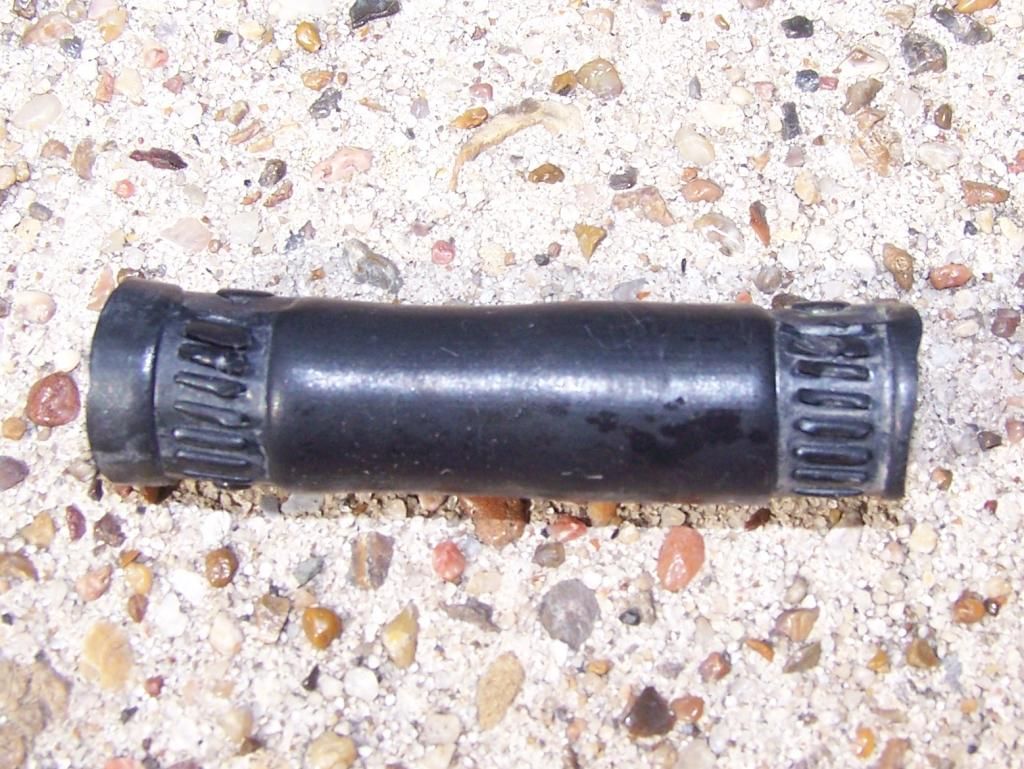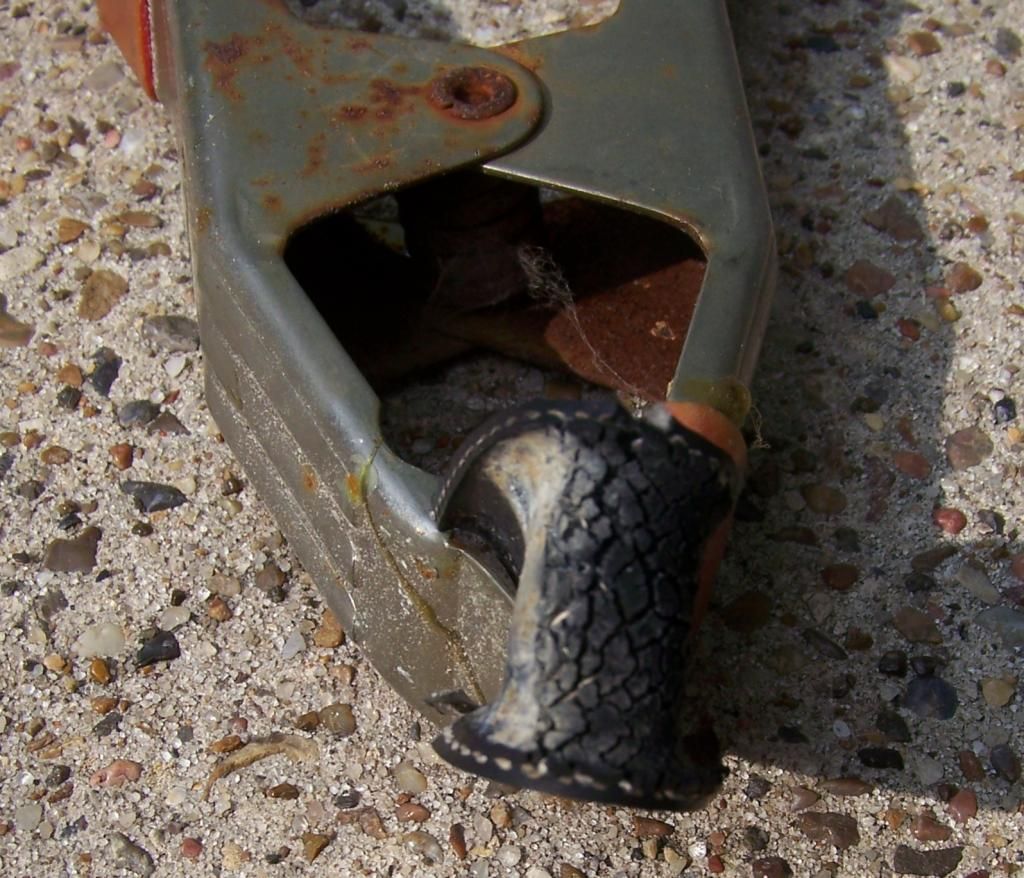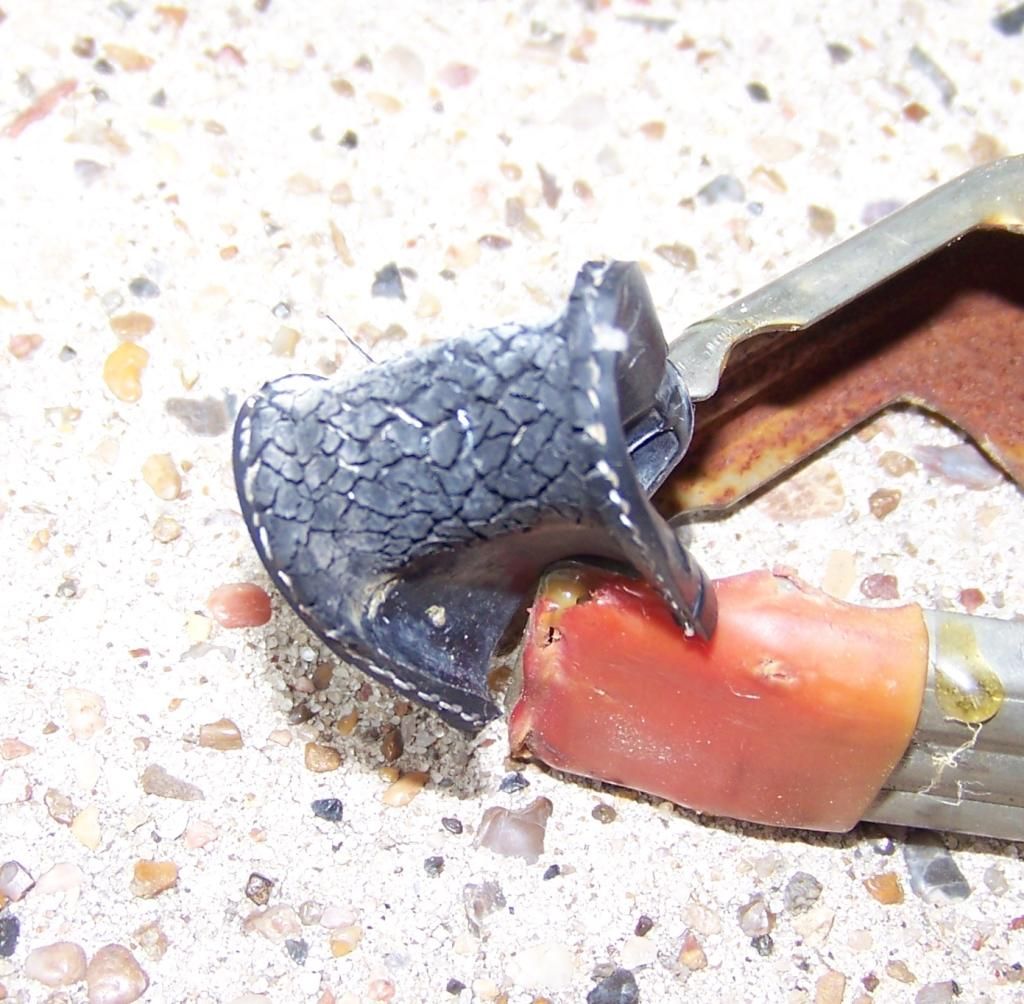Home › Forums › Maintenance of Grummans › Wings › Fuel Tank Drain Lines
Tagged: drain line, fuel, fuel exhaustion, scupper line
- This topic has 2 replies, 2 voices, and was last updated 9 years, 1 month ago by
 Tracy Norris.
Tracy Norris.
-
AuthorPosts
-
-
March 10, 2015 at 10:10 #1374
 Tracy NorrisParticipant
Tracy NorrisParticipantAfter purchasing my AA5A in June of 2013, I noticed water pooling around the fuel tank filler caps. Attempting to clear the drains with a thin piece of flexible wire worked for the right side drain, but not the left. Brought in the A&P and had him have a look and he couldn’t clear the blockage from the right line either.
He recommended replacing the fuel tank drain lines (inside the tank) and this is what he found.
A perfectly-normal looking drain line on the outside…

However, apparently 38 years of being exposed to the elements resulted in
this:
Line has been cut lengthwise and bent inside-out to show the deterioration. On this particular line, I could always smell a hint of fuel if I rubbed my finger across the drain hole under the wing but could never detect an outright drip. The mechanic said they were probably “weeping” and were a very short time away from actually cracking in half (they have a slight bend in the tank).

IMHO, The implications of this happening cannot be overstated. The drain line is completely submerged in fuel. If the line completely breaks then you would have fuel going through the broken line and exiting through the fuel drain UNDER the wing where it probably wouldn’t be noticed for some time. I wonder how many AA5 NTSB “Fuel Starvation” or “Fuel Mismanagement” accidents were actually this line breaking or cracking and leaking fuel?
Thought I would post this for my fellow Grumman Drivers who may overlook this important little piece of rubber. Sitting for years in the sun and surrounded by aromatic fuel can’t help things much.
At a minimum, I would recommend rubbing a finger across the bottom of the drain during preflight and smelling for Avgas. Mine was “weeping” just enough for fuel to get out and evaporate before actually “dripping” from the bottom of the drain line.
Blue Skies,
Tracy -
March 10, 2015 at 20:08 #1379
 Roscoe RoschéKeymaster
Roscoe RoschéKeymasterThis part is actually a fuel tank scupper line (since it takes water or spilled fuel from the fuel cap scupper and get it through the tank to the vent below. It is possible to change these with a pair of long needle nose pliers in the original hoses but the line here was replaced sometime in the past since you can see the band clamp imprints in the hose. The originals has spring clamps.
-
March 11, 2015 at 09:23 #1381
 Tracy NorrisParticipant
Tracy NorrisParticipantInteresting! That would explain the 5 hours of labor charged to drain the tanks, replace the lines (from the access panels beneath), re-seal the panels, find one dripping and re-seal it.
Only a shop that is really familiar with Grummans would consider replacing them through the top (probably a LOT quicker!). Only wish I had thought of that prior to financing the mechanic’s training 🙂
-
-
AuthorPosts
- You must be logged in to reply to this topic.